| Pages:
1
2
3
4 |
markx
National Hazard
   
Posts: 645
Registered: 7-8-2003
Location: Northern kingdom
Member Is Offline
Mood: Very Jolly
|
|
Bickford fuse style home made detonating cord experiment
As the evenings grow longer and darker by the day, I decided to fight the boredom with designing and testing a "shock tube" type of impulse transfer
media. That's what happened:
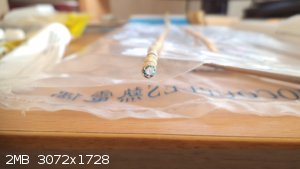 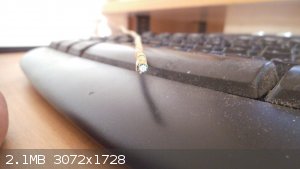 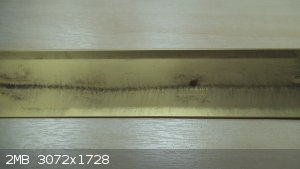 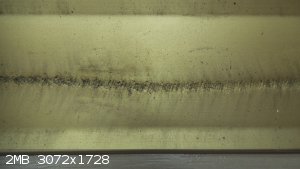
The tubes designed had an active core diameter of 2mm and the fillings used were PETN and RDX. The cords were phlegmatised with a solution of natural
rubber in alkene mixture to desensitize and fortify the construction (dipped in rubber glue to keep things from unraveling, that is). The filling rate
was 3,3g/m and the density of the filling would work out as approximately 1g/cm3. Initiation was commenced by 0,3g of ETN at a density of 1,5g/cm3.
As I predicted so cunningly, the media with RDX did not dissapoint my expectations and resisted all attmpts to initiate it with utter fortitude.
And again, the media with PETN also followed my hopes by imprinting its outer structure in great detail into the aluminium profile that it was taped
onto.
[Edited on 24-9-2014 by Bert]
Exact science is a figment of imagination.......
|
|
|
APO
National Hazard
   
Posts: 627
Registered: 28-12-2012
Location: China Lake
Member Is Offline
Mood: Refluxing
|
|
Have you tested from the batch of RDX that you used?
"Damn it George! I told you not to drop me!"
|
|
|
markx
National Hazard
   
Posts: 645
Registered: 7-8-2003
Location: Northern kingdom
Member Is Offline
Mood: Very Jolly
|
|
Yes, of course, pretty standard quality from Bachmann route with 197C melting point and 65cm drop test height with 2kg weight. It does just fine in
diameters >2mm, but I guess in the shock tube application the dimensions were too close to critical. Also the phlegmatisation will hinder
initiation ability...perhaps an uncoated cord with same filling will fire successfully, but I have not tested that yet.
Exact science is a figment of imagination.......
|
|
|
Bert
Super Administrator
        
Posts: 2821
Registered: 12-3-2004
Member Is Offline
Mood: " I think we are all going to die. I think that love is an illusion. We are flawed, my darling".
|
|
In my experience, "shock tube" is a hollow tube with a very small amount of HMX/Aluminum powder dusted onto the walls... It doesn't even rupture the
plastic 3mm spaghetti tube.
Common brand name: Nonel
The stuff you're making is usually called detonating cord, cordeau, Primacord or such. The core Dia. you show looks similar to commercial "signal
line" det cord.
I would very much like to see your fuse spinning machinery, and know what the jacketing materials are, what pitch and layering scenario, any plans to
incorporate waterproofing layers into the spinning & such- Also, do you have any way to test velocity of detonation? Got access to an oscilloscope or a know standard explosive such as commercial det cord to use the Dautriche method
[Edited on 10-9-2014 by Bert]
Rapopart’s Rules for critical commentary:
1. Attempt to re-express your target’s position so clearly, vividly and fairly that your target says: “Thanks, I wish I’d thought of putting it
that way.”
2. List any points of agreement (especially if they are not matters of general or widespread agreement).
3. Mention anything you have learned from your target.
4. Only then are you permitted to say so much as a word of rebuttal or criticism.
Anatol Rapoport was a Russian-born American mathematical psychologist (1911-2007).
|
|
|
markx
National Hazard
   
Posts: 645
Registered: 7-8-2003
Location: Northern kingdom
Member Is Offline
Mood: Very Jolly
|
|
Quote: Originally posted by Bert  | In my experience, "shock tube" is a hollow tube with a very small amount of HMX/Aluminum powder dusted onto the walls... It doesn't even rupture the
plastic 3mm spaghetti tube.
Common brand name: Nonel
The stuff you're making is usually called detonating cord, cordeau, Primacord or such. The core Dia. you show looks similar to commercial "signal
line" det cord.
I would very much like to see your fuse spinning machinery, and know what the jacketing materials are, what pitch and layering scenario, any plans to
incorporate waterproofing layers into the spinning & such- Also, do you have any way to test velocity of detonation? Got access to an oscilloscope or a know standard explosive such as commercial det cord to use the Dautriche method
|
I stand corrected....yes, by design it is closer to a detonating cord than a shock tube. Or a bloody fast burning visco for that matter. 
The machine responsible for this fast fuse can be seen here:
https://www.youtube.com/watch?v=ZnMqOF28STM
As for materials...this particular length of cord used cotton thread in the inner layer and polyamide thread on the outer shell (it is cheaper and
thinner and has a smooth surface to minimize the outer layer thickness). Waterproofing was made by dipping into diluted rubber glue. I also use this
for waterproof visco...works very reliably and is quite convenient.
The machine is constructed with 3 independently PWM-d motors...so any pitch can be dialed in with the turn of a button. I have found that keeping the
upper platform rpm to a minimum (only enough to run the "mixing rod" in the upper funnel and keep a consistant powder feed) and the lower platform rpm
dialed in depending on the size and type of thread used, gives the best results. In fact one does not need two counter revolving platforms to spin
double layered visco type of contraptions. One of the platforms can be stationary and still the machine works just the same. If one thinks about the
relative nature of movement (speed) then this fact becomes strikingly apparent....but it hit me only after I had already completed the design.
About the detonation velocity...yeah, no luck in getting ahold of a reliable commercial standard. I guess I will have to build some sort of
contraption to measure the speed. Might just be another interesting project 
Exact science is a figment of imagination.......
|
|
|
goldenoranges
Harmless

Posts: 42
Registered: 25-1-2014
Location: Huge Corrugated Pipe
Member Is Offline
Mood: Giddious
|
|
That visco machine is interesting, you could make good money selling something like that on eBay, i for one would buy one 
Knowledge is the Ultimate Power.
PGP Key is in Bio
|
|
|
Bert
Super Administrator
        
Posts: 2821
Registered: 12-3-2004
Member Is Offline
Mood: " I think we are all going to die. I think that love is an illusion. We are flawed, my darling".
|
|
What is this "buy" you speak of?
Rapopart’s Rules for critical commentary:
1. Attempt to re-express your target’s position so clearly, vividly and fairly that your target says: “Thanks, I wish I’d thought of putting it
that way.”
2. List any points of agreement (especially if they are not matters of general or widespread agreement).
3. Mention anything you have learned from your target.
4. Only then are you permitted to say so much as a word of rebuttal or criticism.
Anatol Rapoport was a Russian-born American mathematical psychologist (1911-2007).
|
|
|
goldenoranges
Harmless

Posts: 42
Registered: 25-1-2014
Location: Huge Corrugated Pipe
Member Is Offline
Mood: Giddious
|
|
Awesome  Thanks! Thanks!
Knowledge is the Ultimate Power.
PGP Key is in Bio
|
|
|
markx
National Hazard
   
Posts: 645
Registered: 7-8-2003
Location: Northern kingdom
Member Is Offline
Mood: Very Jolly
|
|
Visco spinning machines via DIY are a pretty old story by now. They are quite easy and cheap to build and make a very interesting and educational
project. Not to mention the unlimited scope of fuse and cord formulations that become so easy to turn into reality.
On the note of cord testing...here is the test body for compressive stregth evaluation of mortar (30MPa dry concrete):
 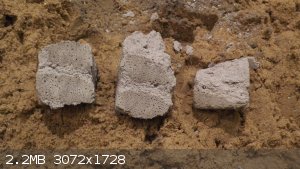
Rigged up with 80cm of PETN core cord...and the resulting damage. I do not have to mention how loud this test was....
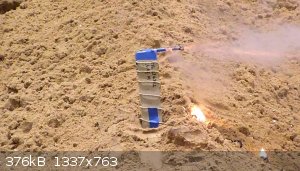   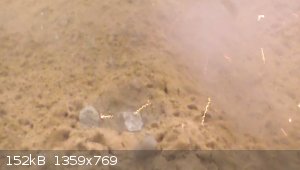
Exact science is a figment of imagination.......
|
|
|
Energetic Einstein
Harmless

Posts: 12
Registered: 10-1-2014
Member Is Offline
Mood: No Mood
|
|
Not gonna lie. Even though its not shock cord that is still Awesome!!
|
|
|
packetforger
Harmless

Posts: 48
Registered: 21-2-2014
Member Is Offline
Mood: Condensing
|
|
Any notion of what kind of lengths (as in, one continous, long, cord) you are able to manufacture using your current method of manufacture?
I only ask because I wish back in the day I had a reliable method of producing long lengths of consistent detcord... It would have been incredibly
useful for all kinds of things! Methods experimented with at the time never really produced much more than a meter or so at a time, with incredibly
inconsistent performance.
|
|
|
markx
National Hazard
   
Posts: 645
Registered: 7-8-2003
Location: Northern kingdom
Member Is Offline
Mood: Very Jolly
|
|
Quote: Originally posted by packetforger  | Any notion of what kind of lengths (as in, one continous, long, cord) you are able to manufacture using your current method of manufacture?
I only ask because I wish back in the day I had a reliable method of producing long lengths of consistent detcord... It would have been incredibly
useful for all kinds of things! Methods experimented with at the time never really produced much more than a meter or so at a time, with incredibly
inconsistent performance. |
In principle the length is only limited by the capacity of collection spool.....currently about the maximum of 5m in one length can be spun with ease
(I've tested the lengths with visco fuse, but there is no principal difference what substance or formulation gets wrapped into the threads) . And of
course the operators capacity towards working with coupious amounts of energetic material. The latter one is my limitation. But as the cords can be
joined together, I guess there is no real limit in length.
Exact science is a figment of imagination.......
|
|
|
packetforger
Harmless

Posts: 48
Registered: 21-2-2014
Member Is Offline
Mood: Condensing
|
|
markx: ah, excellent! Have you published schematics for your particular machine, for others to attempt to replicate such a build?
I can think of several uses for a machine that churns out lengths of fuse, especially for fireworks displays. Had never even considered repurposing
one to manufacture detcord, so congratulations on your ingenuity!
Also, it probably is the critical diameter of the RDX that made it non-initiable or rather, incapable of propagating detonation, perhaps "sensitizing"
it with a percentage of PETN or similar might assist in getting it "going".
|
|
|
Bert
Super Administrator
        
Posts: 2821
Registered: 12-3-2004
Member Is Offline
Mood: " I think we are all going to die. I think that love is an illusion. We are flawed, my darling".
|
|
| Quote: |
The tubes designed had an active core diameter of 2mm and the fillings used were PETN and RDX. The cords were phlegmatised with a solution of natural
rubber in alkene mixture to desensitize and fortify the construction (dipped in rubber glue to keep things from unraveling, that is). The filling rate
was 3,3g/m and the density of the filling would work out as approximately 1g/cm3. Initiation was commenced by 0,3g of ETN at a density of 1,5g/cm3.
As I predicted so cunningly, the media with RDX did not dissapoint my expectations and resisted all attmpts to initiate it with utter fortitude.
|
If the RDX filler will function at the Dia. of fill used in the cord WITHOUT the inert rubber cement coating... And the issue is phlegmatization due
to penetration of the core by the thinned out rubber cement- Perhaps a different coating method or material is in order?
Commercial det cord I have handled has a thin inner plastic liner, made by wrapping a "tape" of plastic in spiral fashion around the core of PETN,
which is then wrapped in the spun/woven outer covering. This prevents loss of the filler during handling, and gives some degree of water resistance.
If a dedicated cord machine were to be made, could this be implemented as an additional wrapping level above the thread wrapping stages?
If applying an outer coating via liquid plastic, consider the coating used by commercial visco manufacturers? It does NOT penetrate the black powder
core of this type of fuse.
Firefox pyrotechnic/rocketry supply catalogue
| Quote: |
Nitrocellulose/Polyester Fuse Coating, NC/PE thick butyrate in various colors (see stock #'s for corresponding color), Ship ORM-D, Non-Hazmat Looking
for a better safety fuse coating agent for use with our fuse machines, Firefox researched, experimented and came up with solutions to a couple of
potential problems that standard Nitrocellulose lacquer has when coated on safety fuse. As most of us have experienced, NC lacquer can burn off ahead
of the burning fuse powder core making it dangerously liabel. I have had premature device ignition caused by the flaming lacquer before the burning
fuse core actually made contact with the primary composition, thus effectively eliminating the essential delay. Secondly, some NC lacquers become
brittle in prolonged storage. This is most likely caused by insufficient or a complete lack of a stabilizer added to the lacquer. Aging brittle fuse
will crack when bent allowing moisture in and ignition failure, especially when using in moist atmospheres or underwater. The answer is our field
tested Nitrocellulose/Polyester Fuse Coating. We start with a high solids loadings NC lacquer, blend in a soluble polyester resin which improves
flexability, aging and effectively reduces lacquer burnoff. Then a nitro group stabilizer is added to gaurd against decomposition and increase shelf
life almost indefinately. This NC/PE lacquer is viscous and dries rapidly so it only has time to soak into the cotton fibers of the fuse and not the
powder core. Can also be used to coat blackmatch, quickmatch, homemade Thermolite Ignitercord, as an electric match overcoat and similar useage.
|
Rapopart’s Rules for critical commentary:
1. Attempt to re-express your target’s position so clearly, vividly and fairly that your target says: “Thanks, I wish I’d thought of putting it
that way.”
2. List any points of agreement (especially if they are not matters of general or widespread agreement).
3. Mention anything you have learned from your target.
4. Only then are you permitted to say so much as a word of rebuttal or criticism.
Anatol Rapoport was a Russian-born American mathematical psychologist (1911-2007).
|
|
|
markx
National Hazard
   
Posts: 645
Registered: 7-8-2003
Location: Northern kingdom
Member Is Offline
Mood: Very Jolly
|
|
Quote: Originally posted by packetforger  | markx: ah, excellent! Have you published schematics for your particular machine, for others to attempt to replicate such a build?
I can think of several uses for a machine that churns out lengths of fuse, especially for fireworks displays. Had never even considered repurposing
one to manufacture detcord, so congratulations on your ingenuity!
Also, it probably is the critical diameter of the RDX that made it non-initiable or rather, incapable of propagating detonation, perhaps "sensitizing"
it with a percentage of PETN or similar might assist in getting it "going". |
Thanks for the kind words  I have no published plans for the machine, but there
is nothing much to it. The only big difference compared to the rest of visco machine plans that I have studied is that I use 4 independent pwm-d 12V
dc motors to drive every moving stage of the machine separately, hence allowing me to change the transmission rpm ratios with just the turn of a
button. And I constructed a primitive traversing stage to "evenly" distribute the product onto the collection spool. All the other designs that I saw
had one central motor that drove the whole machine at certain transmission ratios. The only way to change these ratios was to install different size
drive wheels. Very inconvenient as the transmission ratios depend on core diameter, the number of threads used, the type and width of threads etc. To
get these ratios right without fine tuning is pure coincidece and I knew that I would not be so lucky, hence the fully adjustable rpm controls. I have no published plans for the machine, but there
is nothing much to it. The only big difference compared to the rest of visco machine plans that I have studied is that I use 4 independent pwm-d 12V
dc motors to drive every moving stage of the machine separately, hence allowing me to change the transmission rpm ratios with just the turn of a
button. And I constructed a primitive traversing stage to "evenly" distribute the product onto the collection spool. All the other designs that I saw
had one central motor that drove the whole machine at certain transmission ratios. The only way to change these ratios was to install different size
drive wheels. Very inconvenient as the transmission ratios depend on core diameter, the number of threads used, the type and width of threads etc. To
get these ratios right without fine tuning is pure coincidece and I knew that I would not be so lucky, hence the fully adjustable rpm controls.
The failure with cyclonite core is definately bound to critical diameter of that substance, or rather the composition of rubber impregnated cyclonite
mix at that particular density. I will try the uncoated cord sometime in near future and that should give us an answer wether looking for a better
coating material is justified or not. It would be great if the design could also work with a RDX core (it certainly does so with larger core diameter,
say above 4mm)....I would feel much more comfortable with handling a more stable substance. But the PETN core is also very efficient, it's just
staggering how much power is packed into this thin and innocent looking cord.
For coating of visco I have used sanitary silicone thinned out with toluene based solvent. It creates a thick slurry that does not readily adsorb into
surfaces but rather coats them. It creates a solid silicone coat around the visco and turns it really waterproof. The downside is the long drying
time...several days are needed for the diluted silicone to polymerize into a cured mass.
The incorporation of a tape layer into the woven structure is definately possible...in fact I think it might be as simple as rigging a tape spool and
guidance support on one of the spinning platforms (preferably the lower one). In worst case scenario a separate platform for tape can be added.
Exact science is a figment of imagination.......
|
|
|
markx
National Hazard
   
Posts: 645
Registered: 7-8-2003
Location: Northern kingdom
Member Is Offline
Mood: Very Jolly
|
|
A nice fresh bundle for illustration:
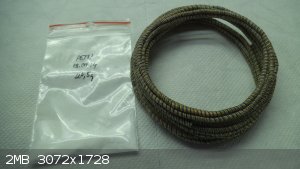
Exact science is a figment of imagination.......
|
|
|
NeonPulse
Hazard to Others
  
Posts: 417
Registered: 29-6-2013
Location: The other end of the internet.
Member Is Offline
Mood: Isolated from Reality! For Real this time....
|
|
I have considered building one of these machines for a while now and this post has given me the extra drive to do so. Fuse is impossible to get where
I live and would be much easier than having to carry cable to vaporize my experiments. Good fuse is important and with a machine that can be fed with
HE makes the project that bit more interesting. I did find some plans out there and it is much more simple than I thought it would be.
Another example of great work Markx.
|
|
|
markx
National Hazard
   
Posts: 645
Registered: 7-8-2003
Location: Northern kingdom
Member Is Offline
Mood: Very Jolly
|
|
Quote: Originally posted by NeonPulse  | I have considered building one of these machines for a while now and this post has given me the extra drive to do so. Fuse is impossible to get where
I live and would be much easier than having to carry cable to vaporize my experiments. Good fuse is important and with a machine that can be fed with
HE makes the project that bit more interesting. I did find some plans out there and it is much more simple than I thought it would be.
Another example of great work Markx. |
The construction is quite straight forward with these machines. There are some small tricks to get it running consistantly and properly. One being the
easy ability to change the transmission ratios and second being the construction of the powderfeed nozzle. Against intuition a funnel geometry at the
point where the threads wrap the powder into the core does not work very well. The powder tends to fall through the threads and gets pulled down on
the outside of the bundle, creating a lot of waste and dust that will hit the lower spinning platform and get thrown all around the machine. With
highly energetic materials this is a right up catastrophy. A flat geometry is so much better. Also a means to agitate the powderfeed is essential for
consistant results. There are very few materials that flow well enough to provide a consistant feed rate without some agitation. I used a stationary
rod with a loop at the end and a strip of scouring pad glued to it lenghtwise that the spinning funnel rubs against. This option works surprisingly
well for most compositions. A guide thread or gentle vibration would also work I suppose, but this option was the easiest to build...no moving parts.
Surprisingly the most expensive part of the whole project is the thread  One
can forget about buying thread on small sewing spools....the big insustrial spools are the only option. I rewind onto smaller dedicated spools and
then feed the machine. At first I bought the threads on small spools to avoid rewinding and one filling cost me more than the whole machine. One
can forget about buying thread on small sewing spools....the big insustrial spools are the only option. I rewind onto smaller dedicated spools and
then feed the machine. At first I bought the threads on small spools to avoid rewinding and one filling cost me more than the whole machine.
Exact science is a figment of imagination.......
|
|
|
markx
National Hazard
   
Posts: 645
Registered: 7-8-2003
Location: Northern kingdom
Member Is Offline
Mood: Very Jolly
|
|
Some detonography on a piece of 2mm thick sheet metal with PETN core cord:
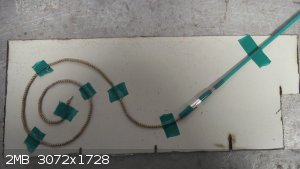 
 
The power is immense as can be seen from the extensive deformation of the witness plate...
[Edited on 19-9-2014 by markx]
Exact science is a figment of imagination.......
|
|
|
Energetic Einstein
Harmless

Posts: 12
Registered: 10-1-2014
Member Is Offline
Mood: No Mood
|
|
That's incredible!
Do you only use RDX as your core, and what do you use in your blasting cap? Can you adjust your core load so you can have 10g per meter load?
|
|
|
markx
National Hazard
   
Posts: 645
Registered: 7-8-2003
Location: Northern kingdom
Member Is Offline
Mood: Very Jolly
|
|
Quote: Originally posted by Energetic Einstein  | That's incredible!
Do you only use RDX as your core, and what do you use in your blasting cap? Can you adjust your core load so you can have 10g per meter load?
|
The cord has a PETN core....cyclonite seems not to be working well with such small diameter charges. It does very well above 2mm diameters, but not so
much around or below that. I still have not tested the raw (unglued) version with cyclonite core, but even if it works it will still be in need of a
different glue and/or different weaving pattern/layers. For small thin charges nothing seems to beat PETN in propagation ability and power...well at
least nothing in the well known accessible spectrum of energetics.
The load rate can be adjusted via different feed nozzles....and yes, 10g/m is not an obstruction if the need should arise. In my opinion such load
rates are unduly high. Appropriate for breaching operations and demolition, but not so much for small scale amateur testing. A matter of objective and
taste I guess...
[Edited on 19-9-2014 by markx]
Exact science is a figment of imagination.......
|
|
|
hinz
Hazard to Others
  
Posts: 200
Registered: 29-10-2004
Member Is Offline
Mood: No Mood
|
|
That looks nice:
http://www.sciencemadness.org/talk/files.php?pid=346660&...
Use some more cord and print your name.
Makes an awesome doorplate 
|
|
|
Bert
Super Administrator
        
Posts: 2821
Registered: 12-3-2004
Member Is Offline
Mood: " I think we are all going to die. I think that love is an illusion. We are flawed, my darling".
|
|
Heavy cord is good for "springing holes"- If you have a narrow hole in rock or wood, and need a wider one to take the charge you would like to use-
Shoot a piece of heavy det in the hole. It will be wider afterwards, no more drilling required.
Rapopart’s Rules for critical commentary:
1. Attempt to re-express your target’s position so clearly, vividly and fairly that your target says: “Thanks, I wish I’d thought of putting it
that way.”
2. List any points of agreement (especially if they are not matters of general or widespread agreement).
3. Mention anything you have learned from your target.
4. Only then are you permitted to say so much as a word of rebuttal or criticism.
Anatol Rapoport was a Russian-born American mathematical psychologist (1911-2007).
|
|
|
Laboratory of Liptakov
International Hazard
    
Posts: 1335
Registered: 2-9-2014
Location: Technion Haifa
Member Is Offline
Mood: cool.gif
|
|
NICE
markx: Very good work. I appreciate anyone who can do hands. Anyone who makes tests. Such people are few. Those that only speak the most. Speaking
nobody has invented nothing. You can do nice things.
LL
|
|
|
jock88
National Hazard
   
Posts: 505
Registered: 13-12-2012
Member Is Offline
Mood: No Mood
|
|
Det cord thread here:
http://www.sciencemadness.org/whisper/viewthread.php?tid=142...
|
|
|
| Pages:
1
2
3
4 |